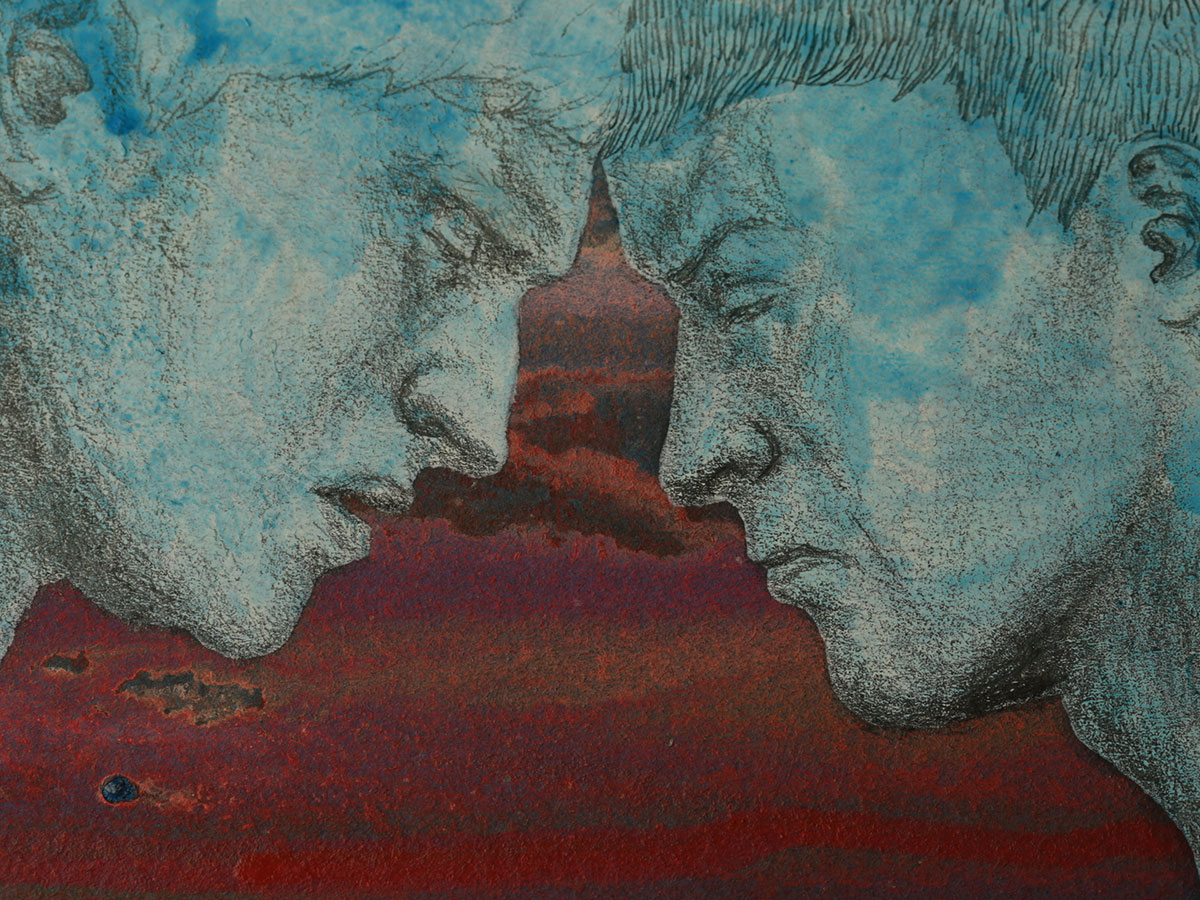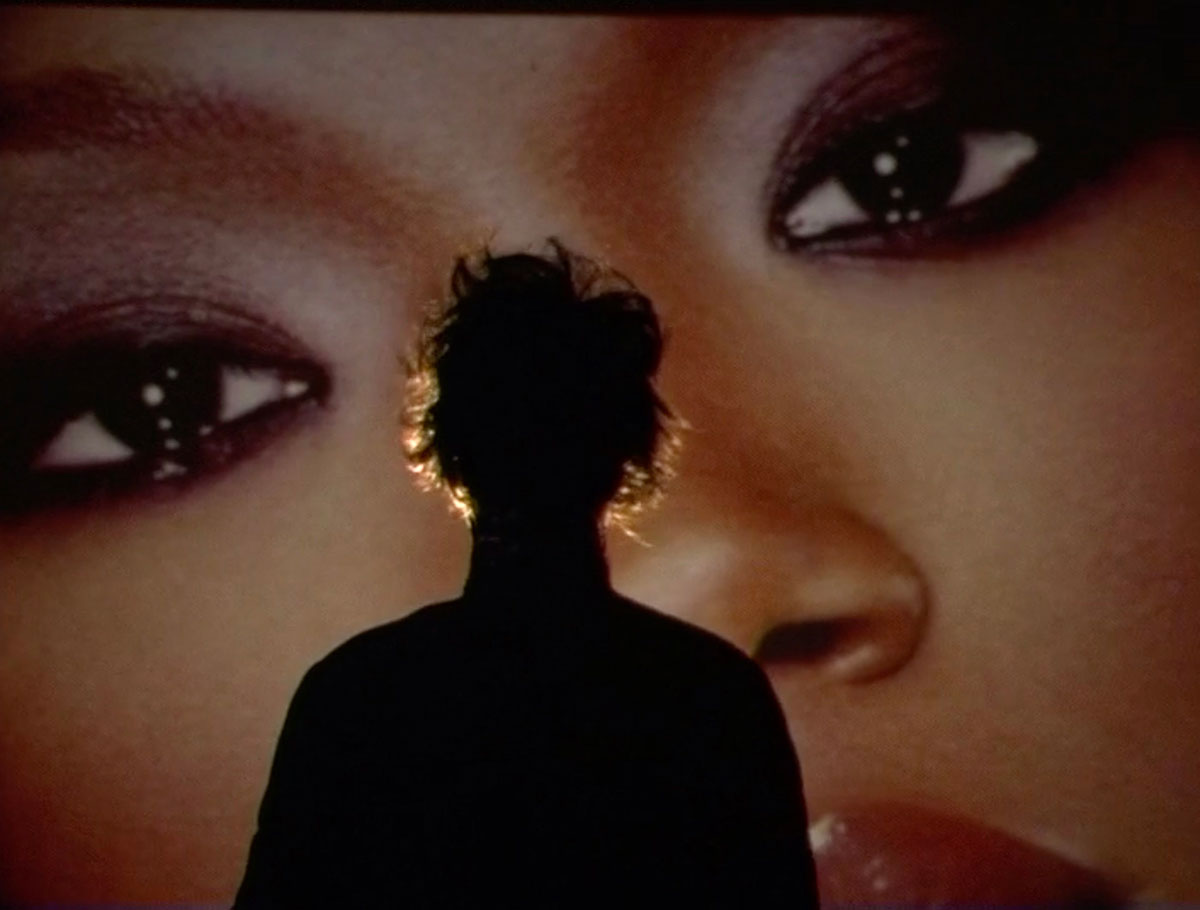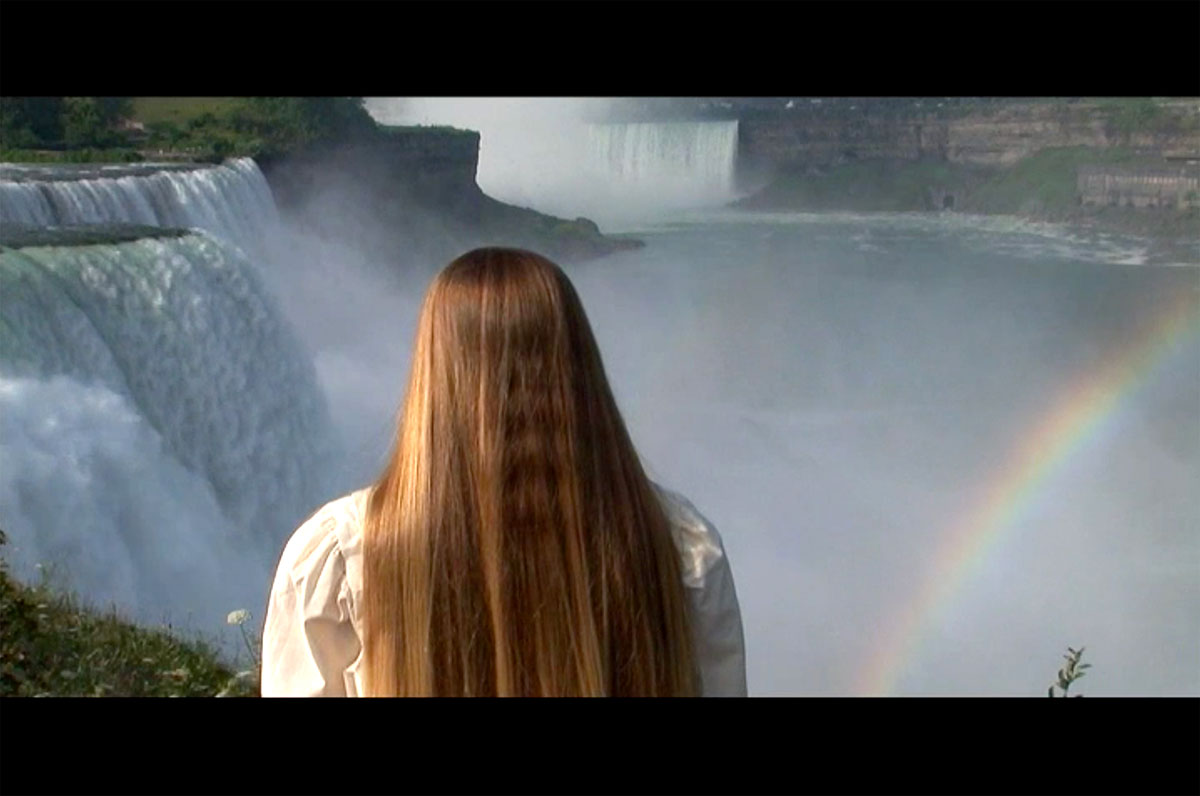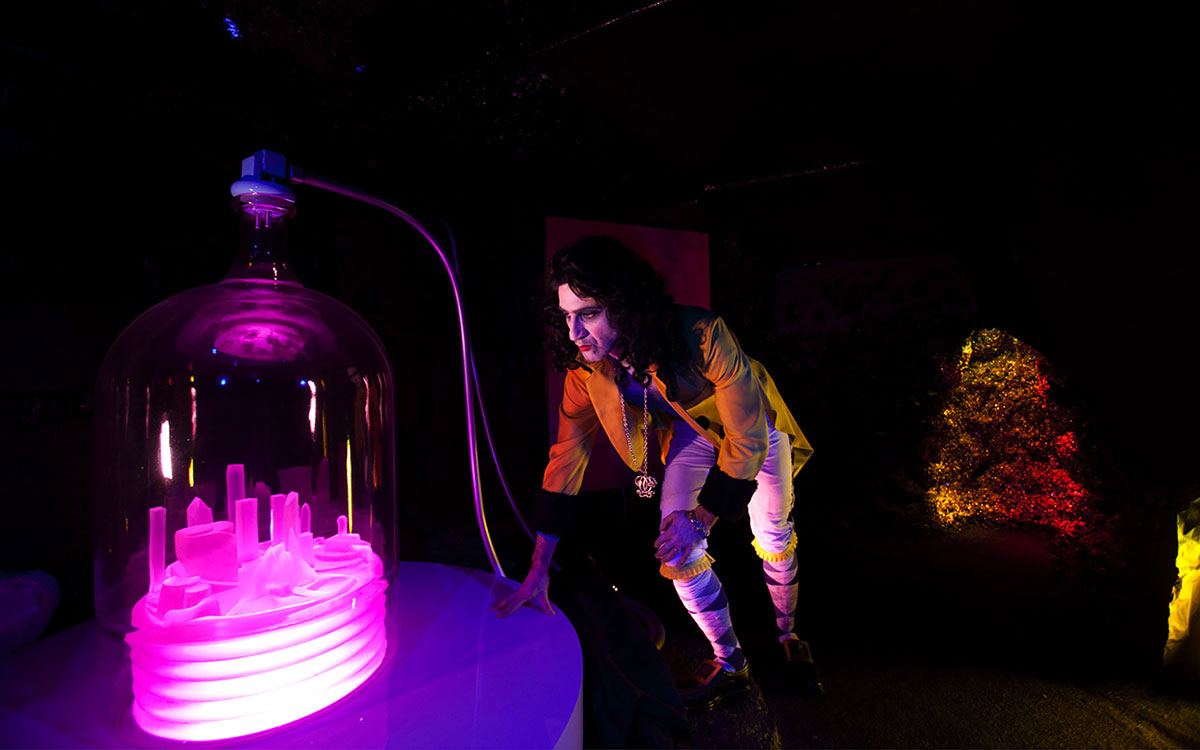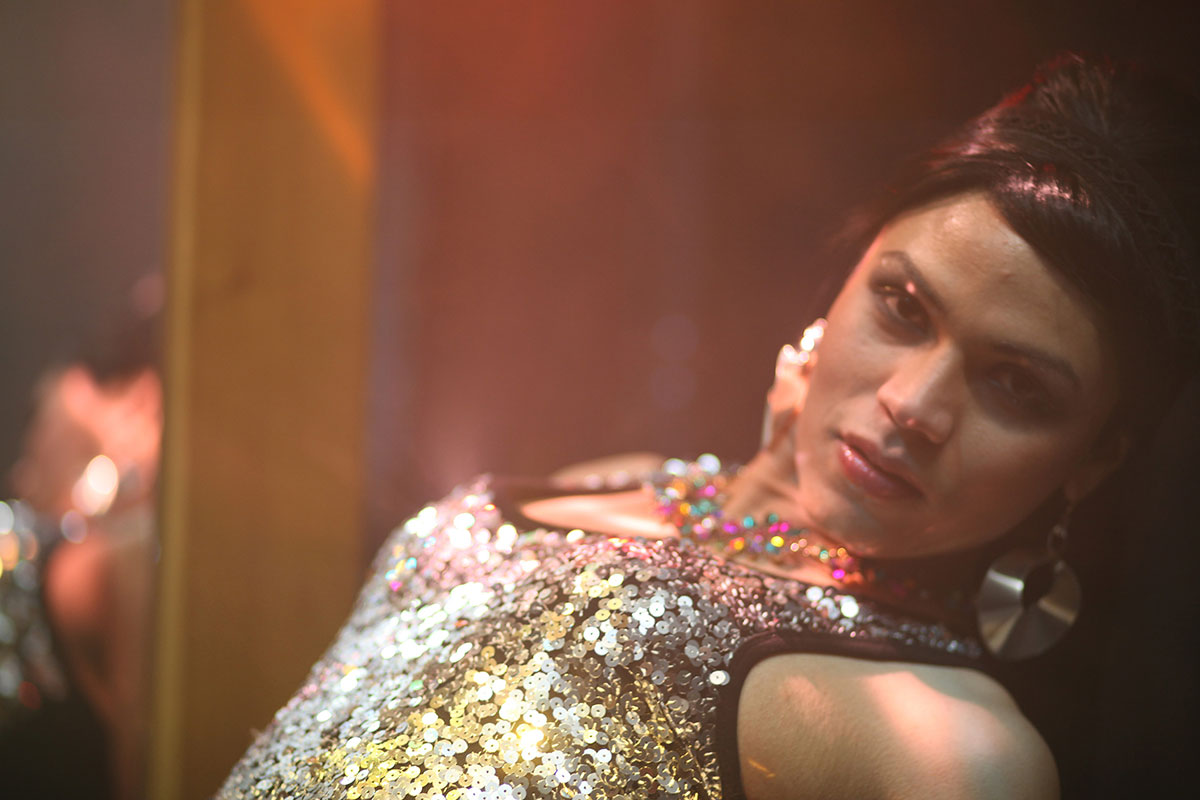PRESENTATION:Mythologists
 Perceptions of truth are widely mediated through moving images. While they can be used by those in authority to exert influence, this exhibition explores the ways in which time-based media can connect political ideologies with the desire to create a world of one’s own. Borrowing from various cultural narratives, the works expound on their potential to serve as an incubator for social mythologies.
Perceptions of truth are widely mediated through moving images. While they can be used by those in authority to exert influence, this exhibition explores the ways in which time-based media can connect political ideologies with the desire to create a world of one’s own. Borrowing from various cultural narratives, the works expound on their potential to serve as an incubator for social mythologies.
By Dimitris Lempesis
Photo: Julia Stoschel Collection Archive
The exhibition “Mythologists” addresses the tensions created between facts and fictions through the production of personal as well as collective narratives. The works each grapple with various mythologies by reinterpreting histories, disrupting established behaviors, and imagining new visual and sonic worlds. What binds them together is that the limits between myth, fact, and fantasy are unclear, whether or not by the artist’s own making. Mika Rottenberg’s video “Chasing Waterfalls. The Rise and Fall of the Amazing Seven Sutherland Sisters” 20060 is a short, impressionistic biopic about the Seven Sutherland Sisters, a real musical act that performed with the Barnum & Bailey Circus in the late nineteenth century. The sisters were known for their luscious floor-length hair, and eventually became the proprietors of a successful line of hair products. Rottenberg opens the video by introducing each sister and the actor who plays her with a cinematic male voice-over. Each actress appears in period dress, armed with a mix of historically plausible and anachronistic props to perform odd tasks against the backdrop of a bucolic landscape. One key task is that of collecting the secret ingredient for their hair care products: airborne mist from Niagara Falls. The video peddles myths about the hair product’s secret ingredients, thereby combining dreamy historical reenactments with the tropes of self-care marketing. In much of her work, Rottenberg employs performers who display a particular bodily feature in a manner suggestive of fetishistic excess—nails, muscles, height, weight, and, in this case, hair. In Victorian culture women became men’s legal property through marriage. Hair was considered a woman’s most valuable asset, and was measured in length and shine. In this video Rottenberg exaggerates the fantasy of white femininity by turning an industrial process (the production and sale of hair tonic) into a poetic one, in which the sisters collect magic water by hand while wearing dresses accented with lace.
WangShui’s “From Its Mouth Came a River of High-End Residential Appliances” (2018) uses personal and cultural mythologies to explore the fluidity of identity-based knowledge. For the production of this video, WangShui hired a drone pilot to film architectural interventions in “Residence Bel-Air,” a luxury apartment complex along the Repulse Bay waterfront in Hong Kong. In accordance with the principles of feng shui, each of the luxury high-rises contains an empty space in the building’s center so as to allow dragons to pass through and drink from the river. These holes, the artist notes, privilege mythology and aesthetic pleasure over profitability in an area where apartments are sold at $200,000 per square foot. They thereby serve as a physical form of ideological resistance to the rationality and authoritarianism of the Chinese government in a territory that, until very recently, retained some degree of political autonomy from mainland China. The slow-moving footage was filmed with a drone and narrated by the artist, who details the events that led to the filming. Throughout the video, the artist increasingly inserts their own shifting subjectivity into the narrative. They weave their own mythology into the story of the shapeshifting Shen dragon, which can take the form of animals, humans, or objects. The dragon passing through the holes in the building is the drone, but it is also the camera, the lens, and the artist themself.
“Parade” (2003) opens with the Mark Leckey’s silhouette, staring out at what appears to be an empty street. The camera pans to reveal that the figure is overlaid on images of stores and illuminated brand-name signage: Sony, Bose, Pioneer, etc. Leckey has inserted himself into the image landscape but cannot fully merge with it, remaining distant and distinct. Parade presents a familiar feedback loop in which advertisements and other media demand consumer participation so as to complete the cycle of desire. He proposes a harmony between bodies and advertising machines in a world where the production of images lives within and alongside us. Although he is present in the montage, “Parade” is not autobiographical; rather, it speaks to the creation of identity in the likeness of images, brands, and other products of pop culture. It is an attempt to experience a particular moment of glamour—to get inside the feeling, to reach for it, to touch it. But what is this “it” that is to be touched? Is it the red shoes and outfit on display, which eventually adorn the protagonist? By the end of the video, the figure has become the advertisement. In the last scene, the camera pans over an empty apartment, and then cuts to a film set. It asks where consumption occurs, and whether desire falls apart once the area backstage becomes visible. Wu Tsang’s video “Wildness” (2012) employs both documentary and fiction techniques to tell the story of the Silver Platter, the only trans-inclusive Latinx bar in the Los Angeles neighborhood of MacArthur Park at the time of the film’s production. From 2008 to 2010, the artist hosted weekly parties at the bar on Tuesday nights, which brought a diverse group of performance artists, musicians, DJ’s, and other members of a comparatively affluent queer community into the fold of this otherwise local, family-owned business.
On view is one of Mike Kelley’s “Extracurricular Activity Projective Reconstruction” video series (2000–2011). In this series, Kelley presents what Milena Tomic has termed “materially precise reconstructions” of found yearbook photos of plays, costume parties, Halloween parties, and other ritualistic spectacles. Kelley mines existing cultural conventions and stereotypes to create fantastical and campy scenarios that explore the complexities of trauma and “victim culture,” which had become a popular American media trope during the late 1990s and 2000s. Various props, sets, photographs, and drawings are used to create sprawling and ambitious installation environments for each video in the series. “Extracurricular Activity Projective Reconstruction #36 (Vice Anglais)” (2011) is set in an eerie cave—or what could be the subterranean recesses of Educational Complex, Kelley’s sculpture from over a decade earlier, which served as a precursor to the video series. The cast of characters enact a hierarchical cycle of torment upon one another with props such as corn, petroleum jelly, foot-balls, whips, and “corn huskers lotion.” They both inhabit and resist stereotypes through the confusing rituals in which they participate, which range from uncomfortable teasing to overt sadism. The viscerally unreal colors and props facilitate Kelley’s exploration of humor, horror, and pop psychology, setting the stage for a wild and gruesome reenactment of American culture. Laure Prouvost’s video “They Parlaient Idéale” (2019) created as part of a larger installation for her presentation at the 58th Venice Biennale. It centers on a pilgrimage of a diverse and intergenerational group of individuals to the site of the French Pavilion. Prouvost uses the group members’ real histories and identities to inform the jour-ney’s surreal fiction, in which the actors recite polysemantic phrases, dance, sing, and perform magic tricks for the camera. Quick cuts and swaps turn banal objects, words, and traveling rituals into an unbridled liquid fantasy. Everything that passes through the lens becomes increasingly fluid—sea creatures drifting through water, rocks, fruits and vegetables, and hands touching disembodied eyes. Jamie Crewe’s two-channel video “Pastoral Drama” (2018) tells one story through two different renditions: the Greek myth of Eurydice and Agostino Agazzari’s seventeenth-century operatic interlude Eumelio. In the original myth, Eurydice, daughter of the sun god Apollo, dies of a snakebite shortly after her marriage. Her husband Orpheus, an acclaimed poet and singer, uses the beauty of his song in an unsuccessful attempt to bring his wife back from Hades. In Agazzari’s interpretation, Eurydice is replaced by the boy Eumelio, who is lured away from his simple, pastoral life and rescued in an act of male camaraderie after malevolent forces drag him to the underworld. The two channels of Crewe’s video echo one another as they play in synchrony, telling tales of platonic intimacy and romance that blur the classical dichotomies of gender.
Artists: Jamie Crewe, Guerrilla Girls, Mike Kelley, Lina Lapelytė, Mark Leckey, Klara Lidén, Laure Prouvost, Mika Rottenberg, Natascha Sadr Haghighian, Jacolby Satterwhite, Wu Tsang, WangShui
Photo: WangShui, From Its Mouth Came a River of High-End Residential Appliances, 2018, video, 13′, loop, color, surround sound. Video still. Courtesy of the artist
Info: Curator: Rachel Vera Steinberg, Julia Stoschel Collection Düsseldorf, Schanzenstrasse 54, Düsseldorf, Duration 17/1-10/4/2022, Days & Hours: Sun 11:00-18:00, https://www.jsc.art
